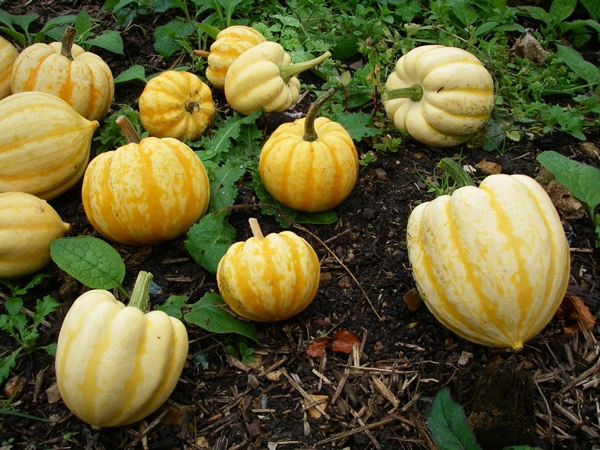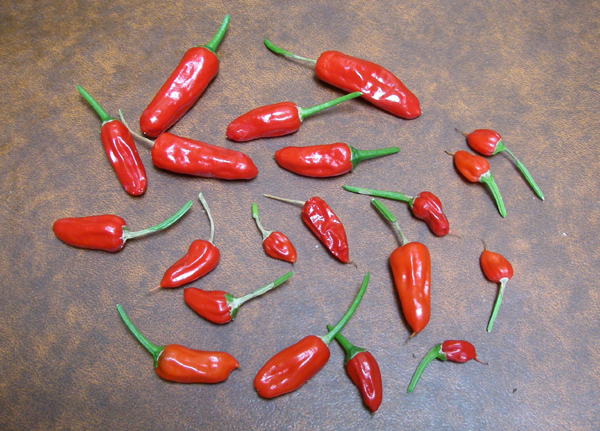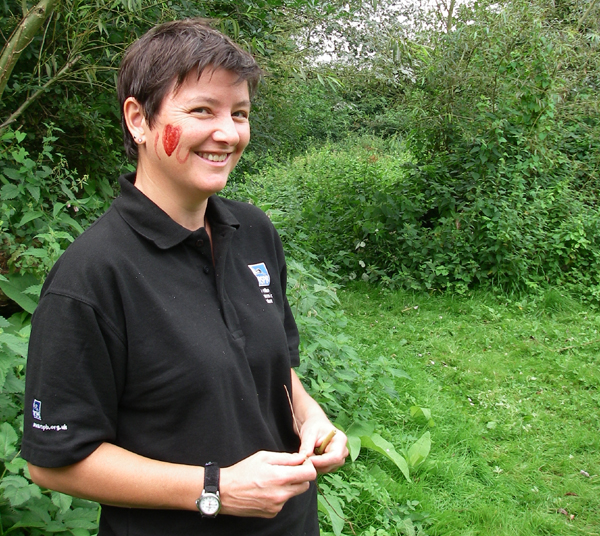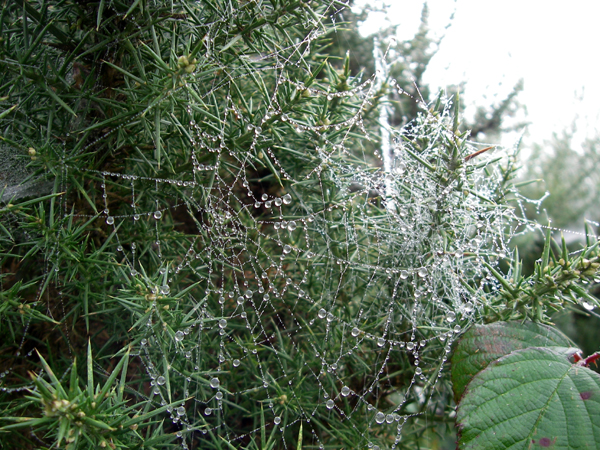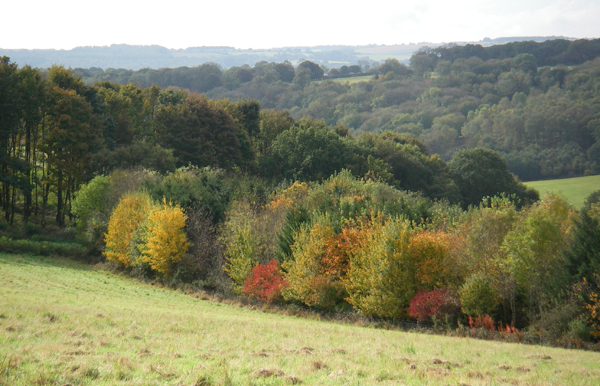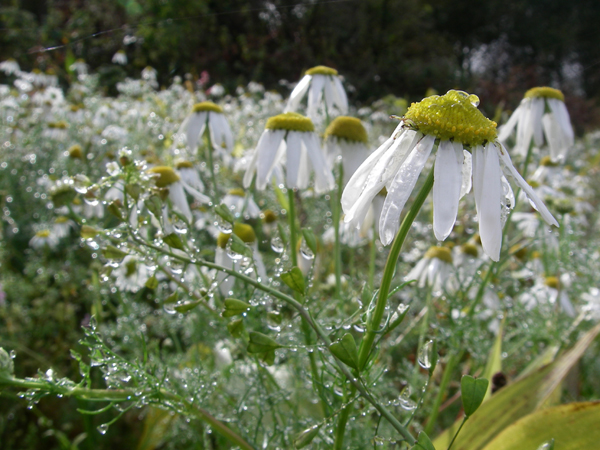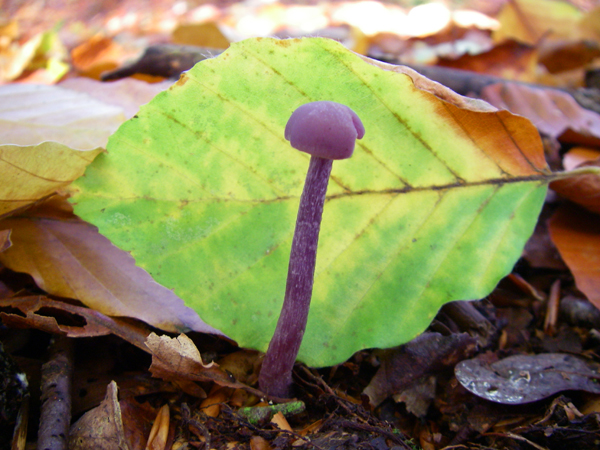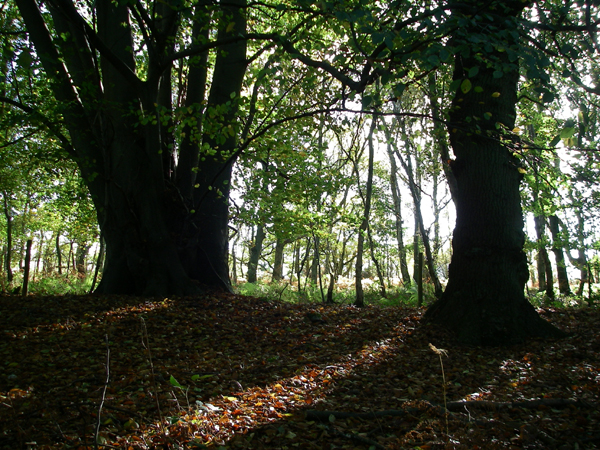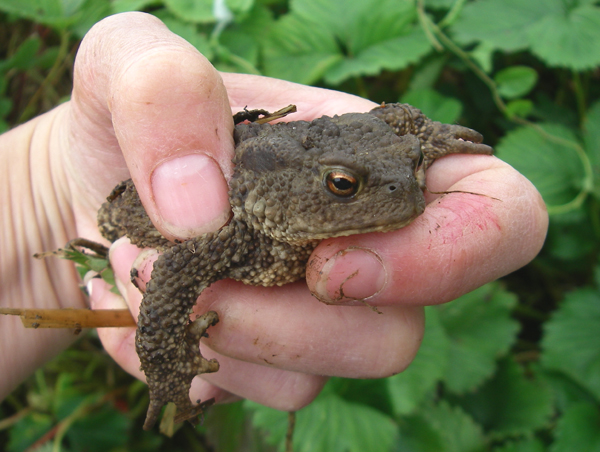If the title of this blog entry seems a trifle enigmatic, let me dispell the mystery: it’s been three months since I last wrote a blog entry. Lawks! How did that happen?
Well it happened, of course, because I’ve been a tad busy. All good stuff, many adventures and projects and work-related developments, but for several weeks other things (including this blog) have had to take a back seat for a while. The allotment that I share with my friend Tessa has also been somewhat neglected, or at least hasn’t received the kind of TLC that we were both able to give it the previous year. To be fair, the rather moist summer we’ve had has meant finding a spare half day to work on our plot when it hasn’t been siling down with rain has been virtually impossible. It’s also meant that an awful lot of veg that we planted did not do well: broad bean plants rotted and died, salads were a disaster area, peas were decimated by pigeons, even courgettes (which we’re usually reduced to putting in carrier bags and leaving anonymously on people’s doorsteps) fell prey to the slugfest that has been this year’s growing season. The only things that did well were our asparagus, Festival squash (pictured above) and some O’Driscoll drying beans (pictured below). These last are a Heritage Seed Library variety that grows like a runner bean, and is picked in late autumn, giving oodles of pleasingly white and purple speckled little round beans that I’m looking forward to eating. I grew mine from a few seeds donated by a kind friend.
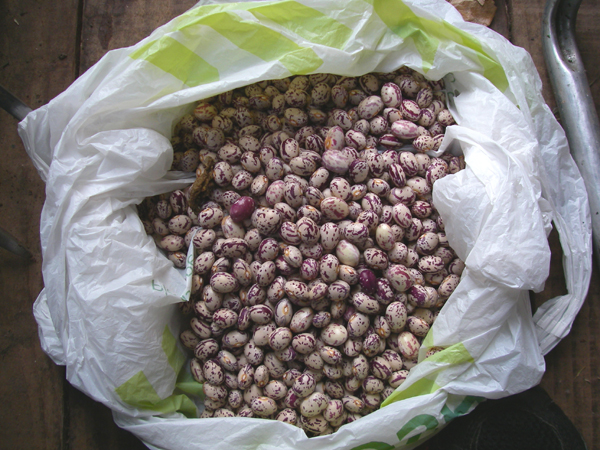 With all the rainy weather I resorted to growing a few things on the windowsills of my flat (which helpfully face due south), including the biggest basil leaves I’ve ever seen in my life and a crop of ‘Apache’ chillies that are so spicy they are probably contributing to global warming. I am a chilliholic (I used to eat the ones that came pickled in jars of vinegar, then drink the vinegar) but these have given me a new respect for chilli-dom. They apparently score 75,000 – 80,000 on the Scoville Scale of chilli hotness: to give you some context, jalapeño chillies score about 2,500 – 8,000 on the Scoville Scale. I’m not sure whether to cook with the Apaches or stockpile them as lethal weapons.
With all the rainy weather I resorted to growing a few things on the windowsills of my flat (which helpfully face due south), including the biggest basil leaves I’ve ever seen in my life and a crop of ‘Apache’ chillies that are so spicy they are probably contributing to global warming. I am a chilliholic (I used to eat the ones that came pickled in jars of vinegar, then drink the vinegar) but these have given me a new respect for chilli-dom. They apparently score 75,000 – 80,000 on the Scoville Scale of chilli hotness: to give you some context, jalapeño chillies score about 2,500 – 8,000 on the Scoville Scale. I’m not sure whether to cook with the Apaches or stockpile them as lethal weapons.
Work has been full-on pretty much all summer and into the autumn, apart from a week off in early August to go to Voice Camp (of which more in a later blog). Despite the adverse weather conditions it’s been a good year so far for field teaching. I’ve especially enjoyed doing some Forest School sessions with the Thatcham Young Rangers youth group I co-lead. The Forest School ethos is that activities are hands-on and largely child-led: we leaders gave instruction in safe and correct tool use, establish some ground rules… Then let the kids choose their own activities. We’ve had den building, fire lighting, stick whittling, tree climbing – in fact, pretty much everything I used to do as a kid, but which most children today are usually not allowed to do. Even just getting messy was a novelty for some of them – though they soon got the hang of it, especially when they discovered how to make facepaints from elderberries and mud!
It’s been great being so busy, but because I’ve been teaching on Saturdays as well (running some wildlife gardening courses for adults) I have missed having weekends to go exploring. Last Saturday was free and I took advantage of the mild autumn weather to go on a yomp around Combe, a few miles southwest of Newbury. Amazingly I didn’t see a soul during the three-hour walk. I started high up on Walbury Hill, where the gorse and brambles lining the track were hung with cobwebs silvered with mist.
It was a perfect day for walking, cool and bright and still. There is something about being high up on hills and ridgelines that is wonderfully exhilarating. You’re about as far away from the sea as you can get in Berkshire, but there is something of the feel of the coast when you’re high up on the downs. It got me thinking about cliffs and the sea as I walked along… Maybe next year I will do some of the South West Coast Path when I’ve got a long weekend or a week free. In the meantime I was happy to be striding out over the hills, enjoying the autumn colours that are starting to show spectacularly in woodlands and hedgerows.
I know from my teaching at Rushall Farm that it’s been as tough a year for farmers as it has been for veg growers, so I was interested to see in one field a straggly crop of maize, interspersed with dense drifts of Scented mayweed Matricaria recutita. I wondered for a moment what kind of maize crop would have been gathered in after the cold wet summer – until I remember that maize is commonly grown as a cover crop on land where pheasant shoots take place. The mayweed was pretty, anyway.
My guess about pheasants proved correct. Once I cut into the woodland, the wretched things kept exploding from the undergrowth like demented banshees. It’s a mystery to me why pheasants sit quietly until they’re almost underfoot, whereupon they burst out in a flurry of scolding clucking and whirring feathers that causes any passer-by to suffer near cardiac arrest. I haven’t eaten pheasant for many years (although my maternal grandpa was a bit of a dab hand at poaching, family lore has it) but by the time I’d walked through the small woodland I would’ve quite cheerfully stuffed a few into an oven. The phrase “too stupid to live” kept coming irresistibly to mind. I know it’s not the pheasants’ fault that they’re here in such vast amounts in our countryside, and they are strikingly handsome birds… But boy, are they dumb. Maybe they have to be, for the purpose of pheasant shoots. I could be wrong, but I suspect that the average toff who goes pheasant shooting (and at a cost of around £1,000 per day, I’m guessing that most of the participants are toffs) prefers his flying targets not to be too quick-witted.
If I sound a bit jaundiced it’s because I am. It’s tricky; I work a lot in rural areas where being anti blood sports is not well looked upon, but it’s the ‘sport’ element of it that I dislike. I’d rather people shot and ate deer, if they have to shoot anything. We could certainly do with a lot less of those around, and in the absence of wolves I guess we could fill that ‘top carnivore’ niche. I don’t object to people knocking off pheasants and eating them per se. It’s the whole industry of it that bothers me – that and the way some gamekeepers and landowners see pheasants as privileged creatures to be protected at all costs, even if that means destroying actual native British wildlife. Our local MP and Minister for Wildlife and Biodiversity Richard Benyon controversially tried to introduce a programme for Defra to fund the capture of buzzards and destruction of their nests. Fortunately the resultant uproar from conservationists – not least because the proposed scheme was based on anecdotes of pheasant chick predation rather than any kind of scientific evidence – forced the government to back down. Or as Richard Benyon put it, “In the light of the public concerns expressed in recent days, I have decided to look at developing new research proposals on buzzards.” Mmm.
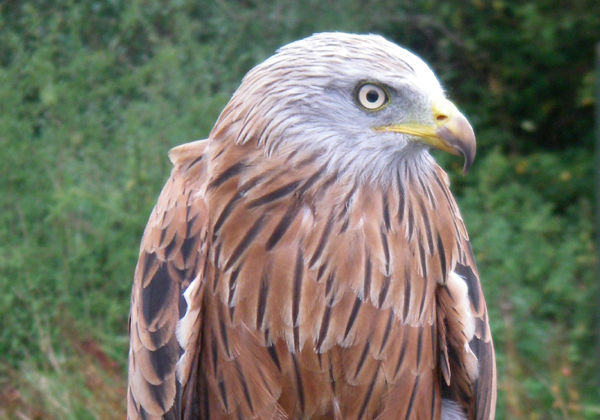 Buzzards are actually commoner than they used to be, largely thanks to the successful reintroduction of red kites (one pictured above) into England. A lot of work was done with landowners and gamekeepers to prevent the newly introduced kites from being shot or poisoned, with the result that buzzards have also benefited. I’m really glad that these large birds of prey are making a comeback: my heart never fails to lift when I see them wheeling and soaring over freshly-ploughed fields at Rushall Farm. And towards the end of my walk around Combe there were a few red kites circling above me, riding the air currents over the downs… A fitting end to a good day’s walking.
Buzzards are actually commoner than they used to be, largely thanks to the successful reintroduction of red kites (one pictured above) into England. A lot of work was done with landowners and gamekeepers to prevent the newly introduced kites from being shot or poisoned, with the result that buzzards have also benefited. I’m really glad that these large birds of prey are making a comeback: my heart never fails to lift when I see them wheeling and soaring over freshly-ploughed fields at Rushall Farm. And towards the end of my walk around Combe there were a few red kites circling above me, riding the air currents over the downs… A fitting end to a good day’s walking.
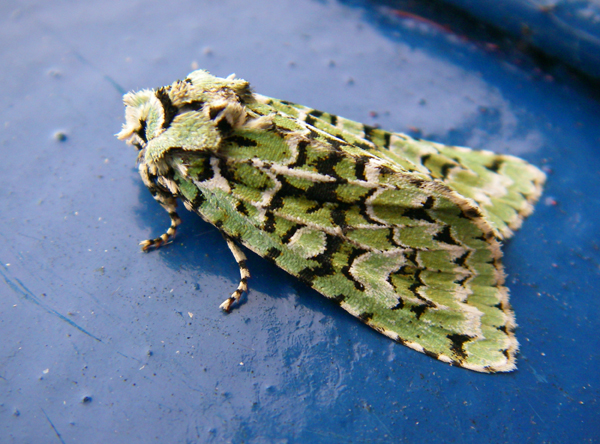 Speaking of Rushall Farm, I had a particularly pleasing moth moment there at the end of a field teaching day this week. I had just finished cleaning the toilets (the glamour of working in outdoor education!) and spotted a very spanking Merveille Du Jour moth sitting on the toilet door. This moth’s name translates as ‘Marvel of the Day’, and it pretty much was. It feeds on oak Quercus spp., of which there is a good amount at Rushall thanks to the well-managed semi-natural ancient woodlands on the farm. All supported by funding such as the Higher Level Stewardship scheme which Rushall succeeded in gaining this year: a good example of how farming can benefit the environment and wildlife.
Speaking of Rushall Farm, I had a particularly pleasing moth moment there at the end of a field teaching day this week. I had just finished cleaning the toilets (the glamour of working in outdoor education!) and spotted a very spanking Merveille Du Jour moth sitting on the toilet door. This moth’s name translates as ‘Marvel of the Day’, and it pretty much was. It feeds on oak Quercus spp., of which there is a good amount at Rushall thanks to the well-managed semi-natural ancient woodlands on the farm. All supported by funding such as the Higher Level Stewardship scheme which Rushall succeeded in gaining this year: a good example of how farming can benefit the environment and wildlife.
This weekend has started clear and cold and sunny, so I made the most of yet another free Saturday to stomp around Snelsmore Common for a couple of hours. The wind was bitter but the woods were looking fabulous: full autumn colours and drifts of leaves bowling around in the gusts. I found an Amethyst Deceiver Laccaria amethystina among the beech leaves, looking like it had been put there by a set designer. Fungi are the coolest things: they recycle dead leaves and wood, and many form dense networks of underground root-like hyphae which grow in close association with the roots of trees and other plants, benefiting them enormously. Fungal hyphae are tiny: in one gram of woodland soil there can be an astonishing 100 metres of hyphae… Yet the largest (and oldest) living thing in the world is a fungus: Armillarea ostoyae (Honey fungus to you and me) in the Blue Mountains in Oregon, one specimen of which has hyphae covering 965 hectares. Epic. How can you not like fungi? Especially as when they do pop their fruiting bodies up above ground or out of logs, as the familiar toadstools or mushrooms we’ve all encountered, they manifest in such a funky range of shapes and colours.
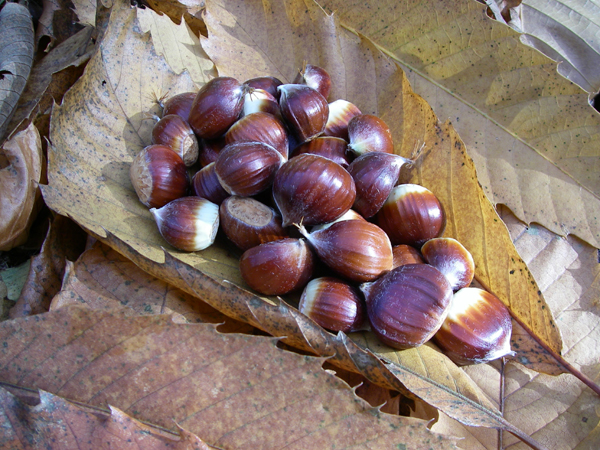 Autumn being the season of mists and mellow fruitfulness, the other good reason to walk through the woods at Snelsmore Common was to glean the ground underneath the many Sweet chestnut trees Castanea sativa that grow there. I was half expecting the squirrels to have got there first, but there were actually lots of nuts to find, especially when I rootled about under the thick litter of orange-brown leaves lying on the ground. I’m not sure yet how I’ll cook ’em up – maybe something involving mushrooms, which go well with sweet chestnuts’ rich earthy sweetness. Or possibly brussels sprouts, although it’ll be a while yet before ours will be ready on our allotment. Maybe I can cook and freeze the chestnuts in the meantime…
Autumn being the season of mists and mellow fruitfulness, the other good reason to walk through the woods at Snelsmore Common was to glean the ground underneath the many Sweet chestnut trees Castanea sativa that grow there. I was half expecting the squirrels to have got there first, but there were actually lots of nuts to find, especially when I rootled about under the thick litter of orange-brown leaves lying on the ground. I’m not sure yet how I’ll cook ’em up – maybe something involving mushrooms, which go well with sweet chestnuts’ rich earthy sweetness. Or possibly brussels sprouts, although it’ll be a while yet before ours will be ready on our allotment. Maybe I can cook and freeze the chestnuts in the meantime…
So by coming back to allotments and food, I’ve come full circle. Must be all this healthy outdoor walking giving me an appetite. My Festival squash are sitting cheerfully in a corner of my kitchen, from where I regularly choose one to roast or stew. I won’t be carving one for Hallowe’en, because they’re just too yummy to waste as lanterns… Though I might carve an ordinary pumpkin anyway, for a bit of fun. I’m looking forward to Hallowe’en – or Samhain, the old Celtic new year, as I celebrate it. In the half term holiday week I’ll be running some ‘Creepy Crafty Creatures’ family events at Five A Day Market Garden which will focus on bats, owls, spiders and other spooky wildlife; plus another wildlife gardening course for adults, so I’ll be keeping busy. In the meantime, I’ll leave you with a photograph of a very gorgeous creepy creature found on our allotment this summer: a beautiful toad who’d made herself at home catching the slugs feasting on our strawberries.
Happy Hallowe’en for next week!

